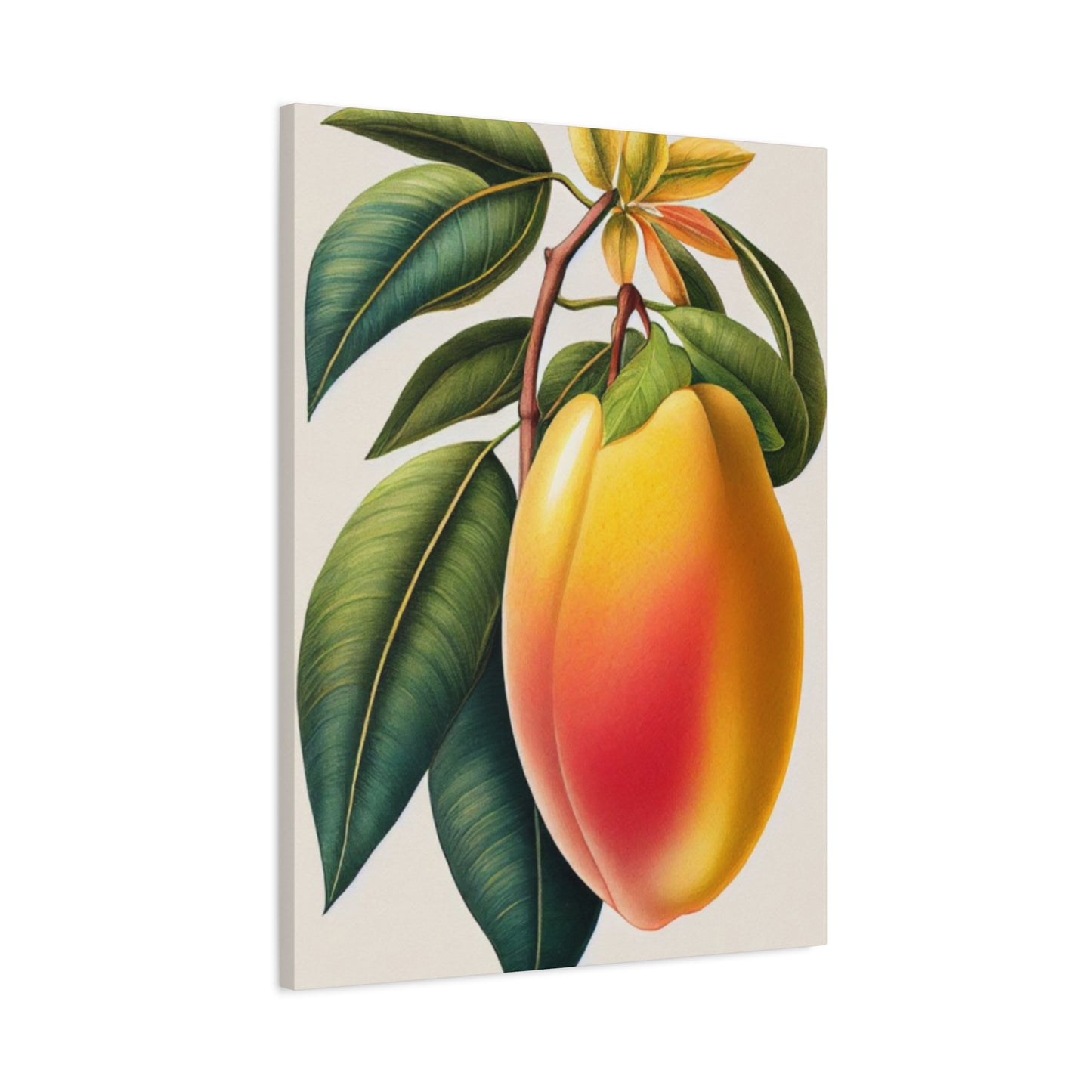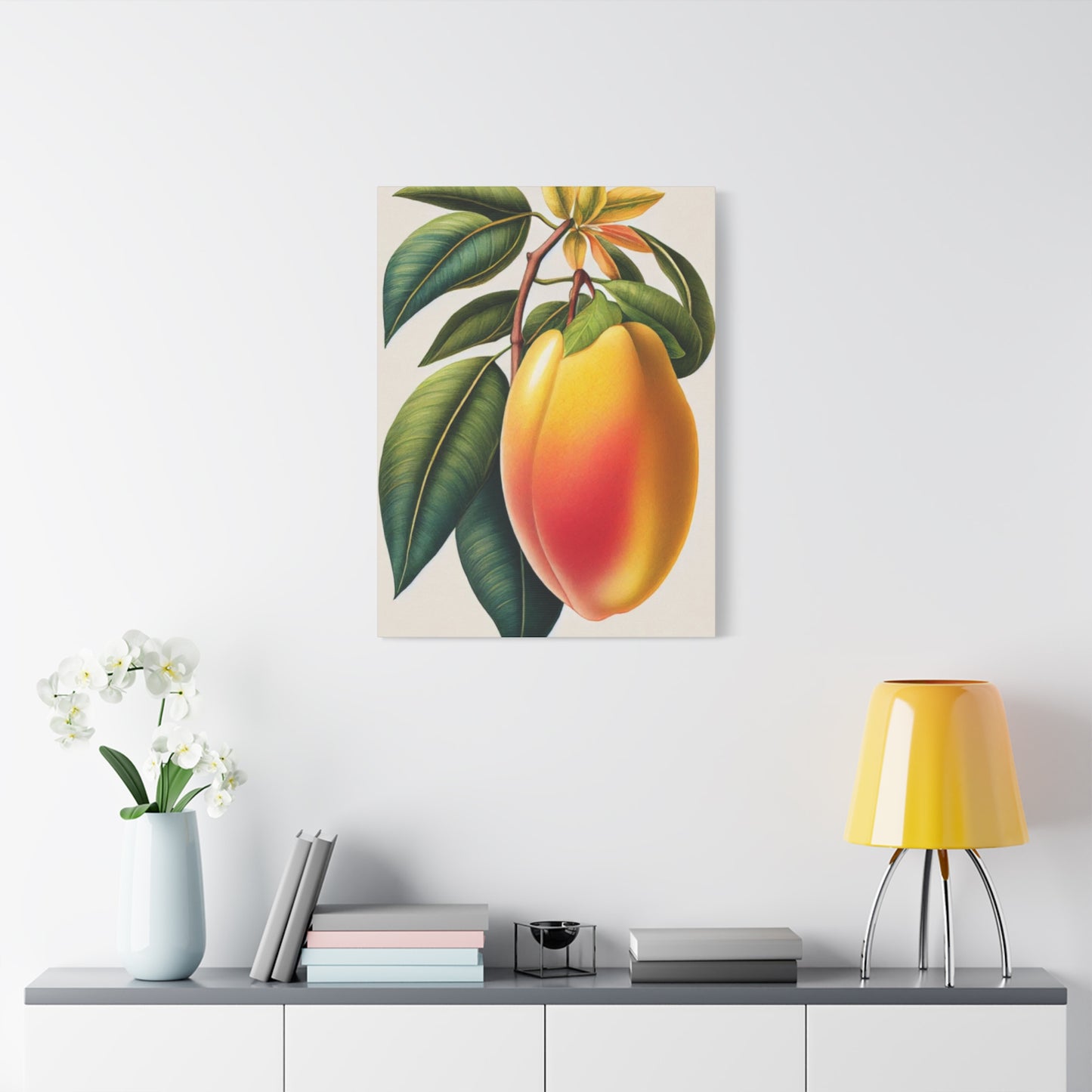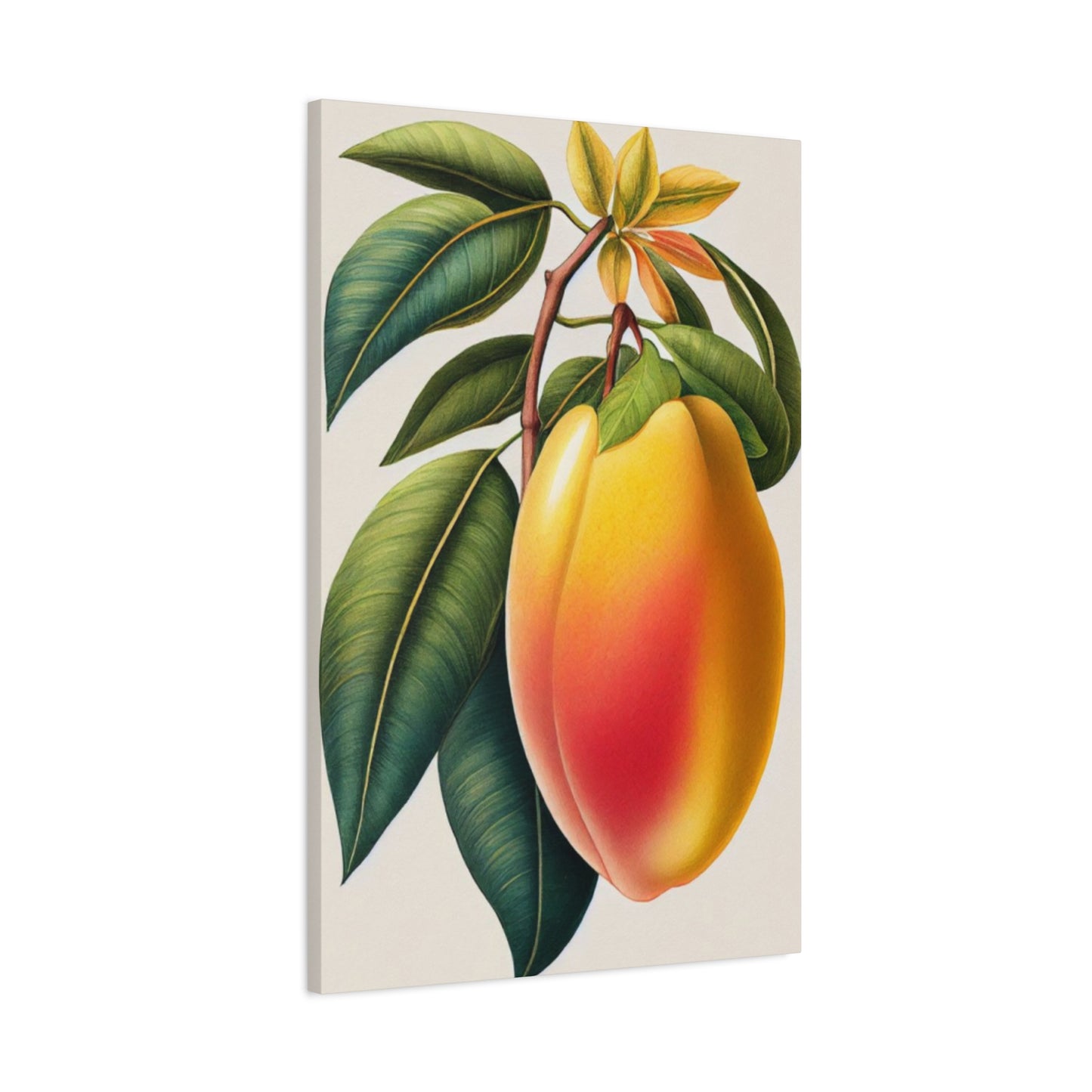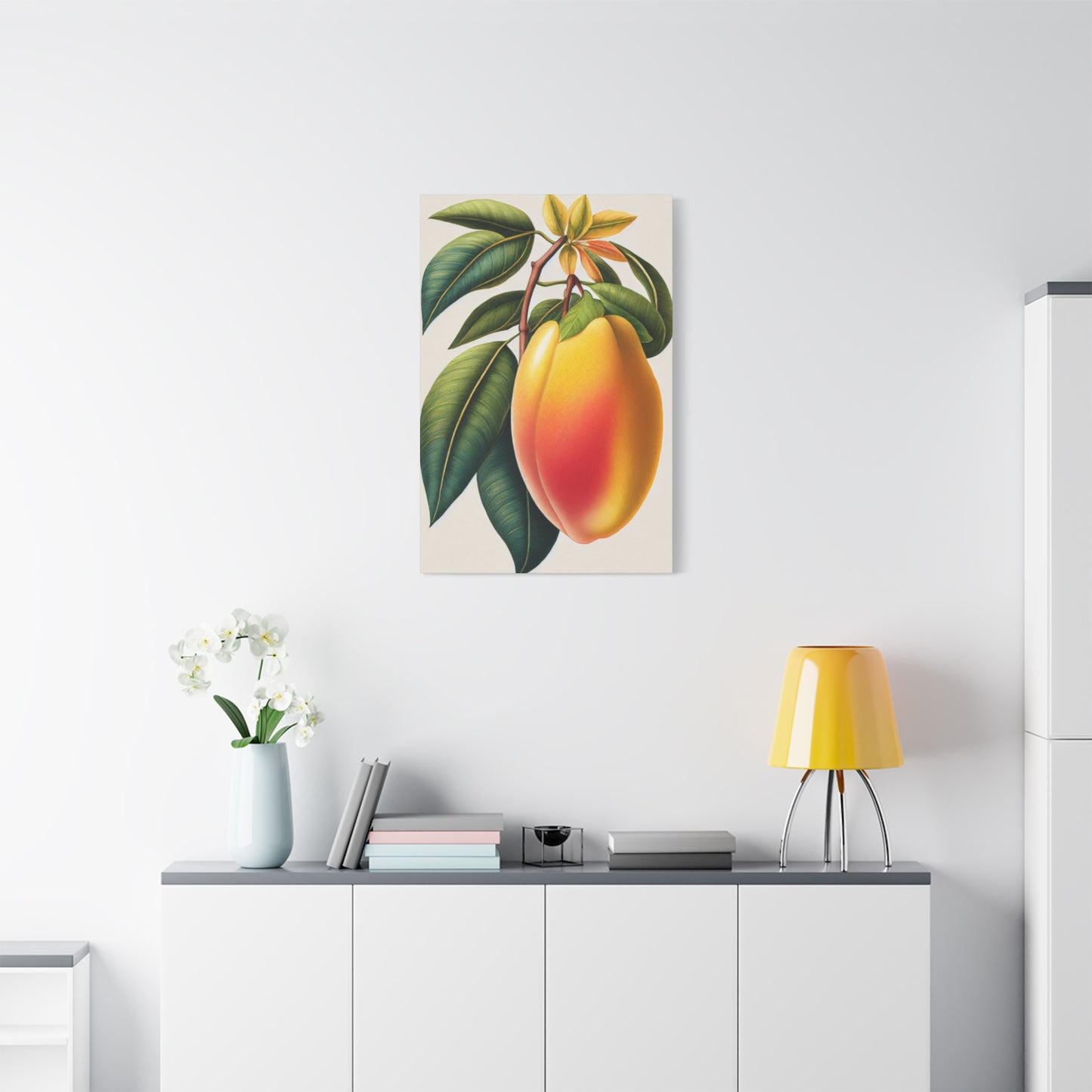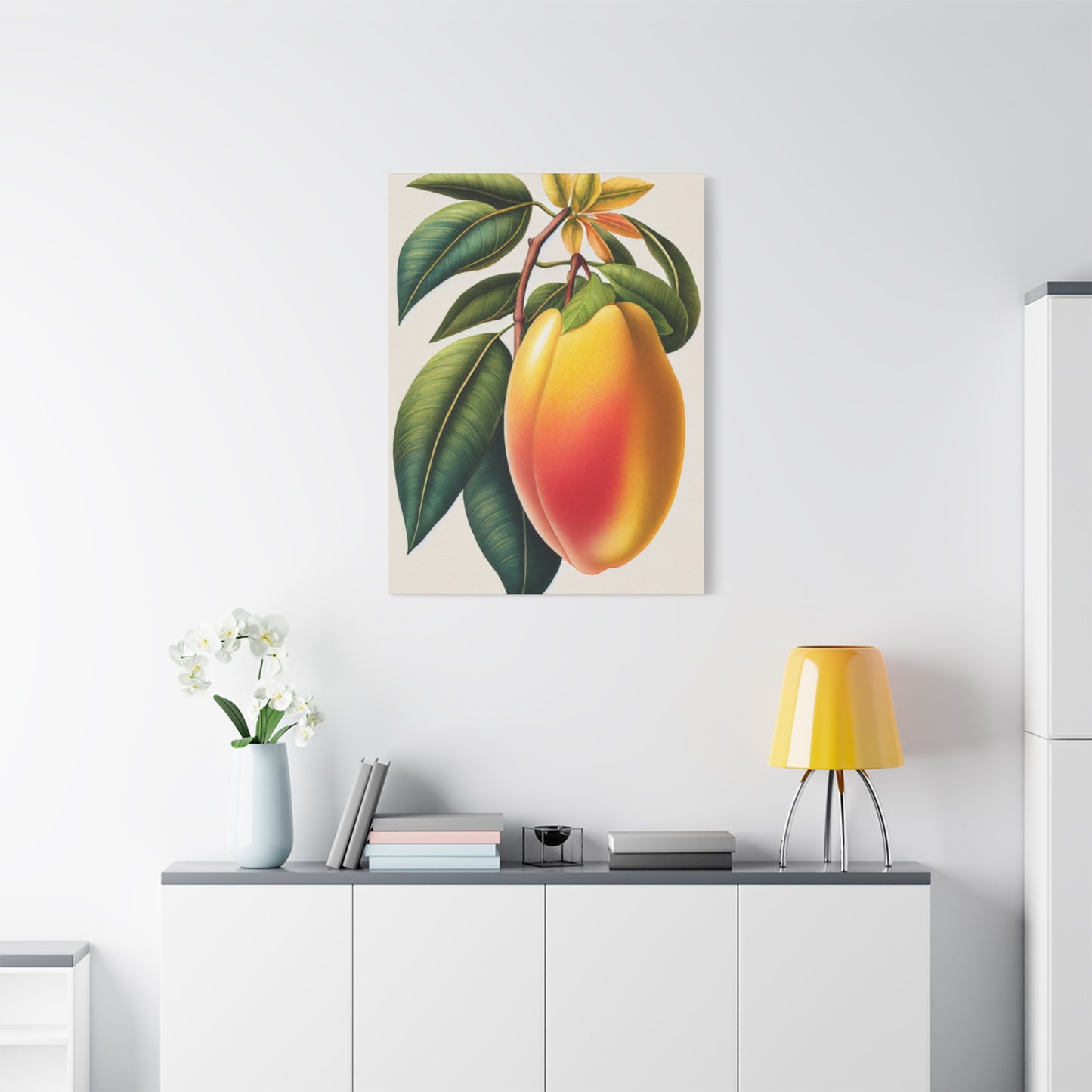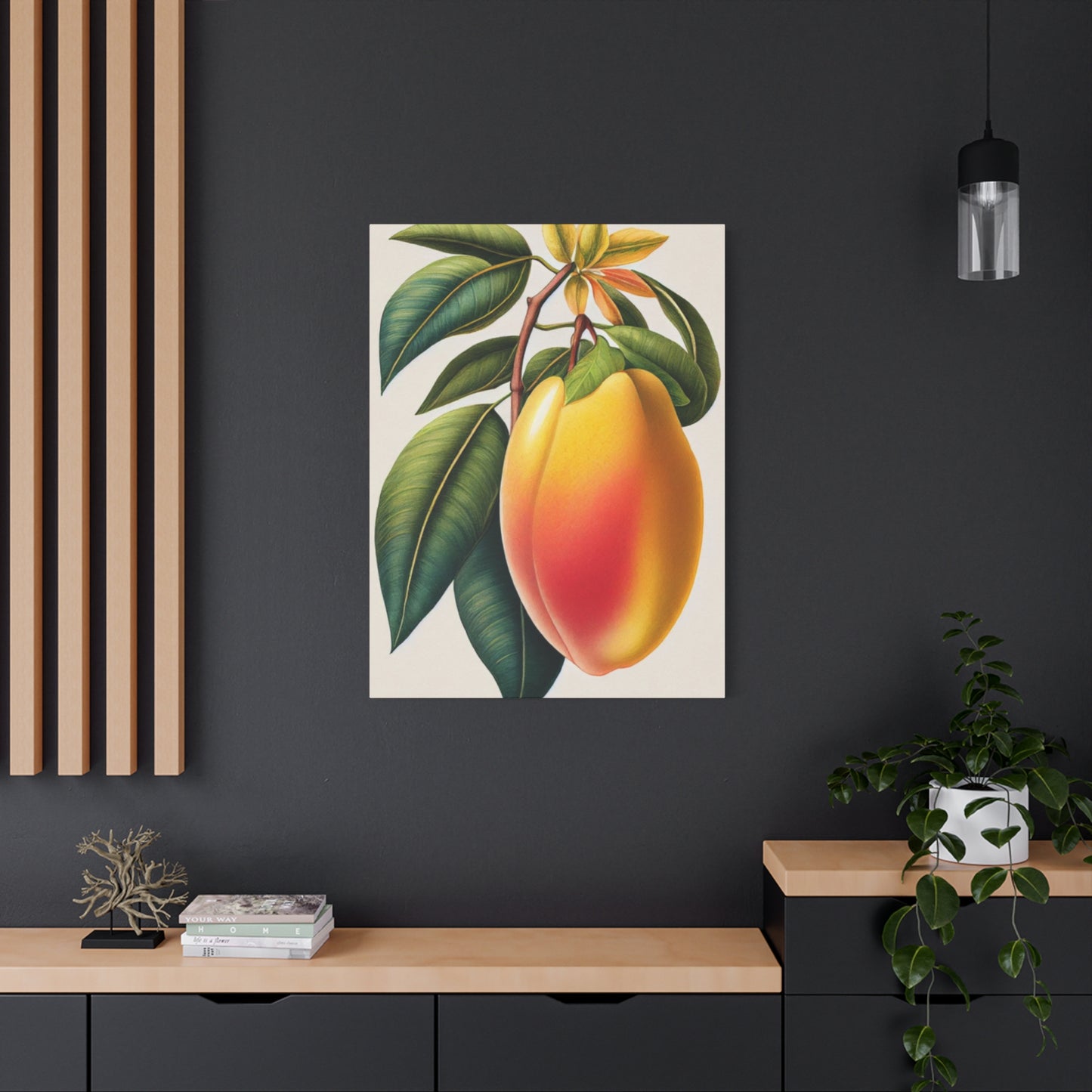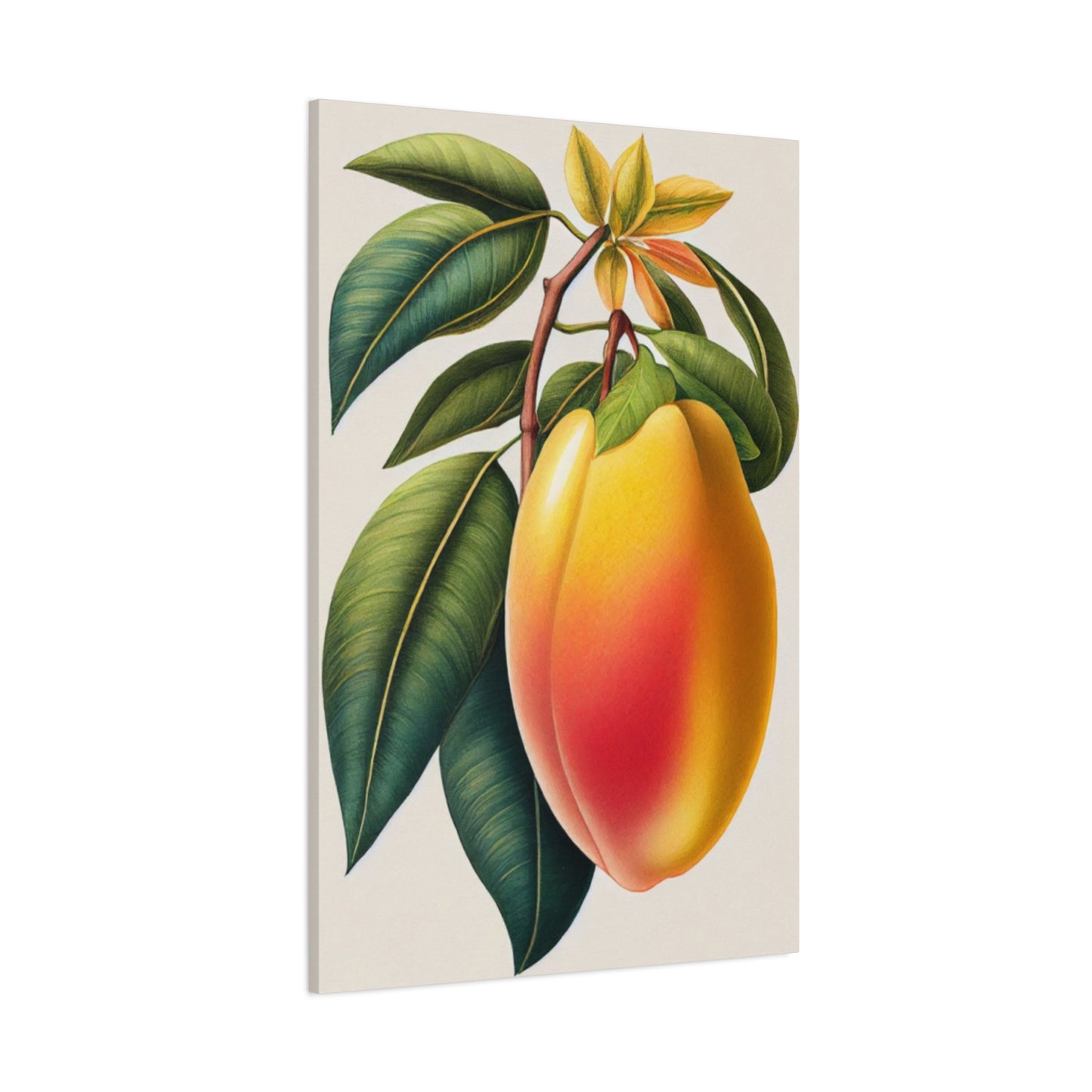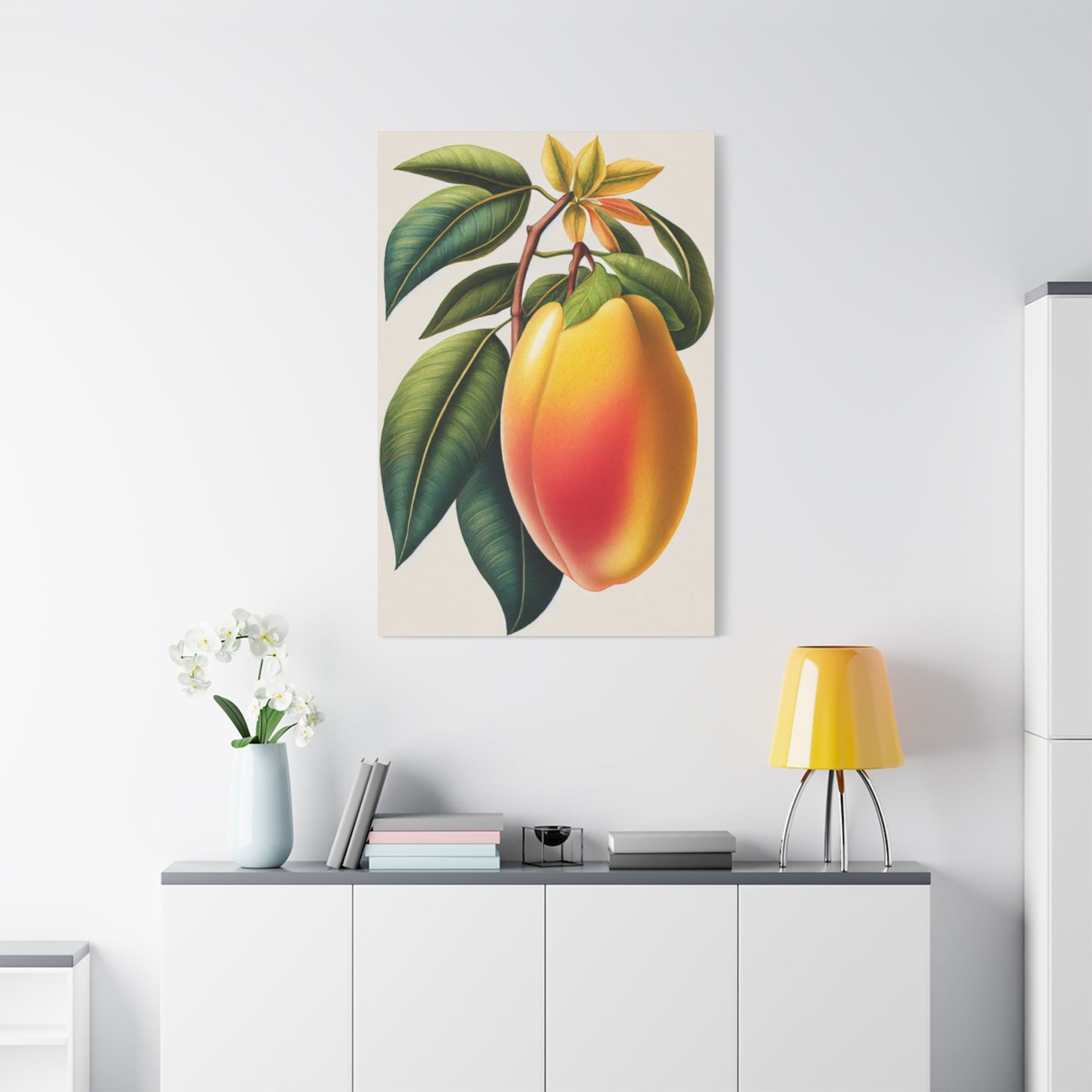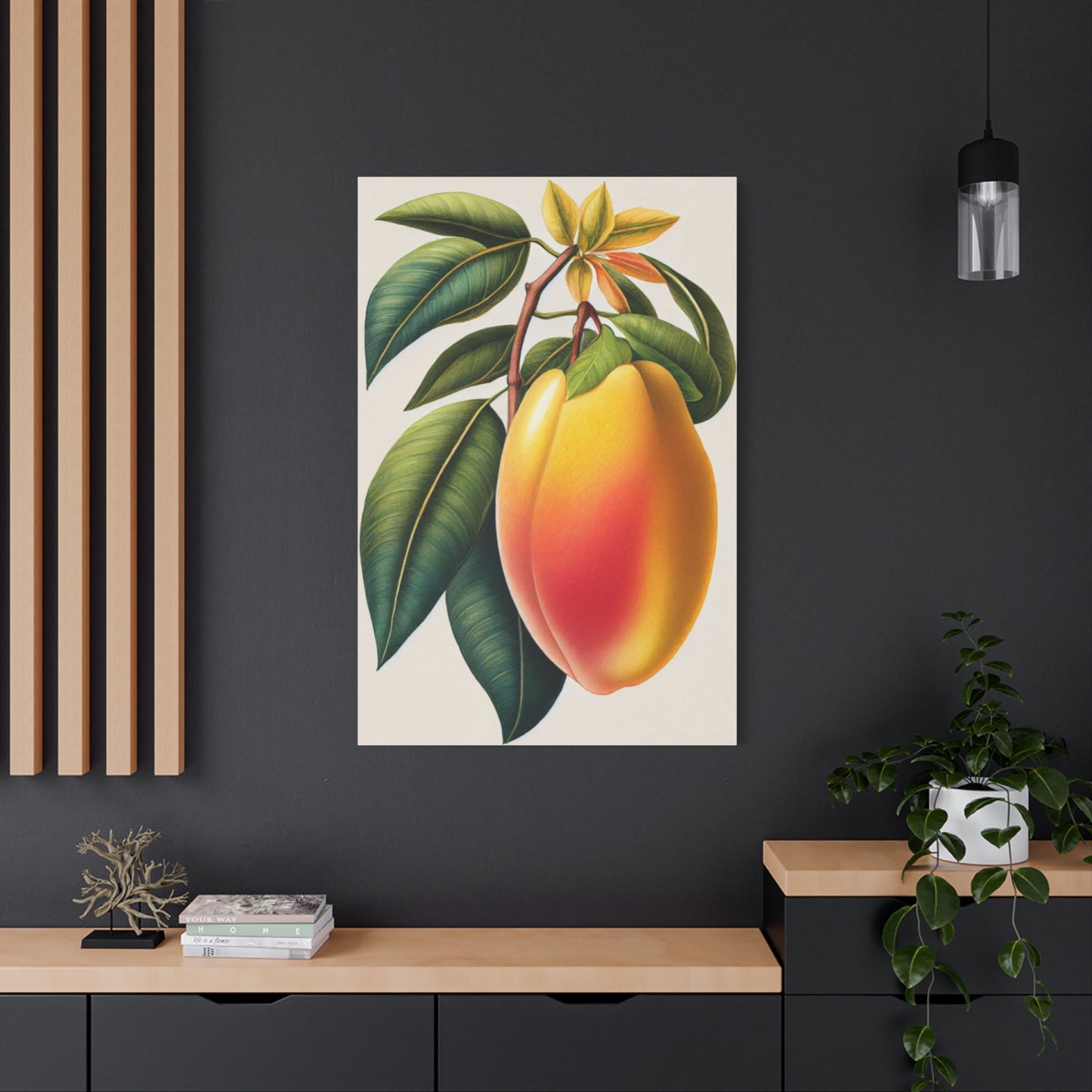How Mango Wall Art Can Bring Warmth, Color, and Style to Your Home
Mango wall art represents a captivating fusion of tropical aesthetics and contemporary interior design, bringing the vibrant essence of this beloved fruit into residential and commercial spaces. The allure of mango-themed decorative pieces stems from their ability to evoke feelings of warmth, abundance, and exotic beauty that transcends geographical boundaries. These artistic representations capture not merely the visual appeal of the fruit but also its cultural significance across various societies where mangoes hold special meaning.
The popularity of mango wall art has surged dramatically in recent years as homeowners and interior designers seek unique ways to infuse natural elements into their living spaces. This trend reflects a broader movement toward biophilic design, where natural motifs and organic forms create environments that promote well-being and connection with nature. Mango-inspired artwork serves as a perfect medium for achieving this goal while simultaneously adding vibrant color palettes and distinctive visual interest to walls.
When exploring mango wall art options, one encounters an extraordinary diversity of styles, mediums, and interpretations. From photorealistic paintings that showcase the fruit's lustrous skin and succulent flesh to abstract representations that capture its essence through bold strokes and vivid hues, these artistic pieces offer something for every aesthetic preference. The versatility of mango imagery allows artists to experiment with various approaches, resulting in collections that span from minimalist line drawings to elaborate mixed-media compositions.
The symbolic significance of mangoes extends far beyond their role as a delicious tropical fruit. In many cultures, mangoes represent prosperity, fertility, and abundance, making mango wall art particularly meaningful for those who wish to incorporate positive energy and symbolism into their homes. This deeper cultural resonance adds layers of meaning to decorative pieces, transforming them from simple artwork into conversation starters and focal points that reflect the homeowner's appreciation for global traditions and natural beauty.
Artistic Styles and Mediums in Mango Wall Decor
The realm of mango wall art encompasses an impressive array of artistic styles, each offering distinct advantages and aesthetic appeals. Watercolor paintings remain among the most popular choices for mango-themed artwork, as this medium perfectly captures the fruit's soft, translucent qualities and natural color gradations. Watercolor mango paintings often feature delicate brushwork that mimics the organic flow of the fruit's curves while incorporating subtle background washes that suggest tropical environments or abstract atmospheres.
Oil paintings provide another compelling medium for mango wall art, offering rich texture and depth that can make the fruit appear almost tangible. Skilled artists working in oils can create stunning trompe-l'oeil effects where mangoes seem to emerge from the canvas, their surfaces glistening with painted highlights that mimic natural moisture. The layering capabilities of oil paint allow for complex color mixing that captures the subtle variations in mango skin tones, from deep purples and reds to golden yellows and vibrant oranges.
Acrylic paintings have gained tremendous popularity in contemporary mango wall art due to their versatility and vibrant color retention. This medium allows artists to work quickly while maintaining precise control over details, resulting in pieces that can range from hyper-realistic to boldly stylized. Acrylic's quick-drying properties enable artists to build up layers rapidly, creating complex compositions that might incorporate multiple mangoes, accompanying foliage, or abstract background elements.
Digital art has revolutionized the mango wall art landscape, offering artists unprecedented creative freedom while providing consumers with affordable, high-quality prints. Digital artists can manipulate colors, textures, and compositions with remarkable precision, creating mango artwork that pushes creative boundaries. This medium also allows for easy reproduction and sizing adjustments, making beautiful mango wall art accessible to a broader audience while maintaining crisp, professional quality.
Photography-based mango wall art presents another fascinating category, where skilled photographers capture the fruit's natural beauty through careful lighting, composition, and post-processing techniques. These pieces might feature single mangoes in dramatic lighting conditions, arrangements of multiple fruits showcasing variety and abundance, or macro photographs that reveal intricate surface details invisible to the casual observer. The photographic approach appeals to those who prefer realistic representations while still appreciating artistic composition and visual impact.
Mixed-media approaches to mango wall art have yielded some of the most innovative and striking pieces in recent years. These works might combine painted elements with three-dimensional components, incorporating actual mango leaves, textured papers, or metallic accents that create dynamic visual experiences. Such pieces often play with light and shadow in ways that traditional flat artwork cannot achieve, resulting in decorative elements that change appearance throughout the day as lighting conditions shift.
Color Psychology and Visual Impact of Mango Artwork
The color palette associated with mango wall art plays a crucial role in its psychological impact and decorative effectiveness. The warm spectrum of colors naturally present in mangoes, ranging from deep burgundy and crimson through brilliant oranges to golden yellows, creates an inherently welcoming and energizing atmosphere in any space. These warm tones are scientifically proven to stimulate feelings of happiness, creativity, and social interaction, making mango wall art particularly suitable for common areas where people gather.
Orange, being the dominant color in many mango representations, carries significant psychological weight in interior design. This vibrant hue is associated with enthusiasm, creativity, and warmth, qualities that can transform the energy of a room. When incorporated thoughtfully into mango wall art, orange tones can make spaces feel more inviting and dynamic without becoming overwhelming. The key lies in balancing these bold colors with complementary elements and considering the room's overall color scheme.
Yellow elements within mango artwork contribute feelings of optimism and mental stimulation. The golden hues found in ripe mangoes can brighten spaces effectively while maintaining a sophisticated appearance. Unlike harsh artificial yellows, the natural yellow tones in mango art feel organic and soothing, creating positive associations with sunshine and natural abundance. These colors work particularly well in spaces that receive limited natural light, helping to create the illusion of brightness and warmth.
Red and burgundy accents in mango wall art add depth and richness to color schemes while maintaining the fruit's natural authenticity. These deeper tones provide visual weight and sophistication, preventing mango artwork from appearing too whimsical or informal. The inclusion of these darker hues allows mango wall art to work effectively in more formal settings while still maintaining its tropical charm and natural appeal.
Green elements, whether representing mango leaves or background foliage, serve as essential balancing components in mango wall art compositions. These cooler tones provide visual relief from warm colors while reinforcing the natural theme. The contrast between warm fruit tones and cool leaf colors creates visual interest and prevents color schemes from becoming monotonous. This natural color combination is inherently pleasing to the human eye and creates a sense of harmony and balance.
The psychological impact of mango wall art extends beyond individual color effects to encompass the overall impression of abundance and tropical luxury. The visual representation of this exotic fruit can evoke memories of vacations, warm climates, and indulgent experiences, contributing to a sense of escapism and relaxation within domestic spaces. This psychological benefit makes mango wall art particularly valuable for creating retreat-like environments in urban settings or colder climates.
Placement Strategies for Maximum Visual Impact
Strategic placement of mango wall art can dramatically enhance its visual impact while contributing to the overall design success of a space. Understanding the principles of visual weight, focal point creation, and spatial relationships enables homeowners to position these decorative elements for maximum effectiveness. The size, color intensity, and style of mango artwork all influence optimal placement decisions, requiring careful consideration of existing room elements and intended atmospheric effects.
Living rooms present numerous opportunities for mango wall art placement, with the area above the main seating arrangement serving as a prime location for significant pieces. This positioning allows the artwork to serve as a focal point while remaining visible from multiple angles throughout the room. When placing mango wall art in living spaces, consider the relationship between the artwork and other decorative elements such as furniture, lighting fixtures, and architectural features to create cohesive visual flow.
Dining areas benefit tremendously from mango wall art placement, as the fruit's associations with abundance and nourishment complement the room's purpose perfectly. Large-scale mango artwork can create dramatic impact on feature walls, while smaller pieces might be grouped to form gallery walls that add visual interest without overwhelming the space. The warm colors typical of mango art can enhance the dining experience by creating inviting, appetizing atmospheres.
Kitchen environments offer unique opportunities for mango wall art integration, particularly in areas away from direct heat and moisture sources. The natural connection between mangoes and culinary experiences makes these spaces ideal for fruit-themed artwork. Consider placement near dining nooks, on interior walls away from cooking surfaces, or in pantry areas where the artwork can provide pleasant visual interest without exposure to harsh conditions.
Bedroom spaces can accommodate mango wall art effectively when pieces are chosen and positioned thoughtfully. The warm, soothing colors of mango artwork can contribute to relaxing atmospheres while adding personality and visual interest to sleeping areas. Consider placing smaller, more subdued mango pieces on walls adjacent to beds or using larger statement pieces on walls opposite sleeping areas where they can be appreciated without being overwhelming.
Hallway and entryway placements for mango wall art create welcoming impressions while efficiently utilizing often-overlooked wall space. These transitional areas benefit from artwork that adds warmth and personality without requiring extended viewing time. Mango wall art in these locations can establish the home's aesthetic tone while providing pleasant visual experiences for both residents and guests moving through the space.
Office and workspace environments can benefit significantly from mango wall art placement, particularly pieces that emphasize the fruit's associations with abundance and success. The energizing colors and positive symbolism of mangoes can contribute to motivating work environments while adding personality to professional spaces. Consider placement where the artwork will be visible during breaks or meetings but won't create distraction during focused work periods.
Size and Scale Considerations for Different Spaces
Selecting appropriate sizes for mango wall art requires careful consideration of room dimensions, viewing distances, and existing decorative elements. The relationship between artwork size and space proportions significantly impacts visual effectiveness, with pieces that are too small appearing lost and insignificant while oversized pieces can overwhelm rooms and create uncomfortable visual tension. Understanding these relationships enables better decision-making when choosing mango wall art for specific locations.
Large-scale mango wall art, typically measuring 36 inches or larger in any dimension, works best in spacious rooms with high ceilings and substantial furniture pieces. These statement works can serve as room focal points while balancing other large-scale elements such as sectional seating, dining tables, or entertainment centers. When incorporating large mango artwork, ensure adequate wall space surrounds the piece to prevent visual crowding and allow the artwork to breathe within the composition.
Medium-sized mango wall art, generally ranging from 16 to 36 inches, offers versatility for various room types and decorative schemes. These pieces work effectively above furniture, in groupings with other artwork, or as standalone elements in smaller rooms. Medium-scale mango art provides enough visual impact to serve as decorative focal points while maintaining flexibility for future room changes or redecorating efforts.
Small mango wall art pieces, typically under 16 inches, excel in intimate settings or as components of larger gallery wall arrangements. These smaller works allow for creative clustering and can be easily repositioned as design needs change. Multiple small mango pieces can create dynamic compositions that tell stories or showcase different artistic interpretations while maintaining cohesive themes throughout the arrangement.
Vertical versus horizontal orientation considerations play crucial roles in mango wall art selection and placement. Vertical pieces can emphasize ceiling height and create elegant, sophisticated impressions, while horizontal orientations tend to make spaces feel wider and more relaxed. The natural shape of mangoes lends itself to both orientations, allowing artists to create pieces that work effectively in various spatial configurations.
Series and collection approaches to mango wall art sizing offer opportunities to create cohesive decorative schemes while providing flexibility in placement options. Artists often create mango artwork in complementary sizes that can be displayed together or separately, allowing consumers to adapt their purchases to different rooms or changing needs over time. These series approaches can provide economic advantages while ensuring visual continuity across multiple spaces.
The relationship between mango wall art size and viewing distance requires careful consideration to ensure optimal visual experiences. Pieces intended for close viewing, such as those placed in hallways or above seating areas, can incorporate fine details and subtle color variations that reward careful examination. Artwork designed for viewing from greater distances should emphasize bold colors, clear shapes, and strong compositional elements that remain effective across rooms.
Complementary Design Elements and Color Schemes
Creating harmonious interior environments with mango wall art requires thoughtful consideration of complementary design elements and supporting color schemes. The warm, tropical nature of mango imagery pairs beautifully with various decorative styles, from contemporary minimalism to bohemian maximalism, provided that supporting elements are chosen to enhance rather than compete with the artwork's natural beauty and symbolic significance.
Neutral color schemes provide excellent foundations for mango wall art, allowing the fruit's natural colors to serve as vibrant accents within otherwise subdued palettes. Warm neutrals such as cream, beige, and soft taupe complement mango artwork particularly well, creating sophisticated backgrounds that highlight the artwork without creating visual competition. Cool neutrals like gray and white can also work effectively, providing contrast that makes warm mango colors appear more vibrant and engaging.
Monochromatic color schemes built around mango-inspired hues can create deeply satisfying, cohesive environments when executed thoughtfully. These approaches might emphasize various shades of orange, from pale peachy tones to deep burnt orange, creating rich, enveloping atmospheres that celebrate the mango's natural color range. Success with monochromatic schemes requires careful attention to texture and pattern variation to prevent visual monotony.
Complementary color schemes incorporating blues and blue-greens can create striking contrasts with mango wall art while maintaining natural harmony. The relationship between warm mango colors and cool blues mimics natural color combinations found in tropical environments, creating psychologically pleasing contrasts that energize spaces without appearing forced or artificial. These combinations work particularly well in coastal or tropical-themed decorating schemes.
Analogous color schemes that incorporate colors adjacent to mango hues on the color wheel can create harmonious, flowing environments that feel naturally integrated. Combinations might include yellow-oranges, reds, and yellow-greens, creating smooth color transitions that guide the eye pleasantly through spaces. These schemes tend to feel comfortable and relaxing while maintaining enough variety to prevent boredom.
Natural materials and textures provide excellent companions for mango wall art, reinforcing the organic themes while adding tactile interest to spaces. Wood elements, whether in furniture, flooring, or decorative objects, complement mango artwork beautifully by echoing natural origins and warm color tones. Stone, rattan, bamboo, and other organic materials can further enhance these connections while providing textural contrast to painted or printed artwork surfaces.
Metallic accents can elevate mango wall art presentations when chosen and applied thoughtfully. Warm metals such as copper, brass, and gold harmonize naturally with mango colors while adding sophistication and light reflection that can enhance artwork visibility. Cool metals like silver and chrome can provide interesting contrast but should be used sparingly to avoid creating visual tension with warm mango tones.
Lighting considerations play crucial roles in complementary design schemes featuring mango wall art. Natural light enhances the warm colors beautifully, but artificial lighting must be chosen carefully to maintain color accuracy and visual appeal. Warm-toned LED or incandescent lighting typically provides the most flattering illumination for mango artwork, while cool fluorescent lighting can make warm colors appear dull or muddy.
Significance and Symbolism in Mango Art
The cultural significance of mangoes extends far beyond their role as delicious tropical fruits, encompassing rich symbolic meanings that add depth and resonance to mango wall art. Understanding these cultural associations can enhance appreciation for mango-themed decorative pieces while informing selection decisions for those who wish to incorporate meaningful symbolism into their living spaces. The mango's elevated status in various cultures worldwide contributes to its power as an artistic subject.
In Hindu tradition, mangoes hold sacred significance as symbols of love, fertility, and abundance. The fruit is associated with various deities and features prominently in religious ceremonies and festivals. This spiritual connection imbues mango wall art with positive energy and meaningful symbolism that transcends mere decoration. For individuals with connections to Hindu culture or those who appreciate its rich symbolic traditions, mango artwork can serve as daily reminders of spiritual values and cultural heritage.
Buddhist symbolism also embraces the mango as a representation of enlightenment and spiritual nourishment. Stories within Buddhist tradition describe the Buddha's meditation beneath mango trees and his teachings about the fruit's significance as a metaphor for spiritual growth and wisdom. Mango wall art inspired by these traditions might incorporate elements of mindfulness, serenity, and spiritual contemplation that enhance meditative practices and peaceful environments.
Southeast Asian cultures celebrate mangoes as symbols of prosperity, good fortune, and royal favor. Historical associations with nobility and wealth make mango imagery particularly meaningful for those seeking to attract abundance and success. Traditional art forms from Thailand, Cambodia, and other Southeast Asian nations often feature elaborate mango motifs that can inspire contemporary wall art pieces with rich cultural authenticity and symbolic power.
Caribbean and Latin American cultures have embraced mangoes as symbols of tropical paradise, hospitality, and community celebration. These associations make mango wall art particularly appropriate for creating welcoming, festive atmospheres that celebrate life's pleasures and social connections. The fruit's association with warm climates and relaxed lifestyles can help create escape-like environments within homes regardless of geographical location.
African cultures, particularly in regions where mangoes grow naturally, have developed rich traditions around the fruit that emphasize community, sharing, and natural abundance. These cultural perspectives can inform mango wall art that celebrates collective values and environmental harmony. Understanding these traditions adds layers of meaning to decorative choices while honoring diverse cultural perspectives on this globally beloved fruit.
Contemporary interpretations of mango symbolism often focus on themes of sustainability, global connection, and cultural appreciation. Modern mango wall art might explore these concepts while celebrating the fruit's role in international trade, cultural exchange, and environmental consciousness. These contemporary approaches allow for artistic expression that addresses current social concerns while maintaining connection to traditional symbolic meanings.
The universality of mango appreciation across cultures creates opportunities for mango wall art to serve as bridges between different traditions and worldviews. Pieces that incorporate multiple cultural perspectives or contemporary interpretations of traditional themes can create inclusive environments that celebrate diversity while finding common ground in shared appreciation for natural beauty and abundance.
Mixing Mango Art with Other Botanical Elements
Creating sophisticated botanical arrangements that incorporate mango wall art alongside other plant-themed decorative elements requires understanding of natural relationships, visual balance, and thematic coherence. The tropical origins of mangoes provide natural connections to various other botanical subjects, enabling rich, layered decorative schemes that celebrate nature's diversity while maintaining unified aesthetic approaches. Successful mixing strategies enhance rather than compete with mango artwork's inherent appeal.
Tropical plant combinations work naturally with mango wall art, as these elements share common environmental origins and aesthetic characteristics. Palm fronds, banana leaves, hibiscus flowers, and bird of paradise imagery can complement mango artwork while creating immersive tropical environments. These combinations work particularly well in spaces designed to evoke vacation destinations or exotic retreat atmospheres.
Citrus fruit combinations offer opportunities to create cohesive fruit-themed arrangements that maintain botanical authenticity while expanding color palettes and visual interest. Oranges, lemons, limes, and grapefruits share similar growing conditions with mangoes and provide complementary colors and forms. These combinations can create abundance-themed displays that celebrate nature's variety while maintaining thematic unity.
Flowering plant elements can enhance mango wall art by adding delicate, feminine touches that balance the fruit's bold, substantial presence. Orchids, plumeria, and other tropical flowers provide natural companions that share environmental preferences while offering different scales, textures, and forms. These combinations work particularly well in spaces where softer, more romantic atmospheres are desired.
Foliage-focused combinations emphasize the lush, green environments where mangoes naturally grow while providing calming, nature-inspired atmospheres. Fern imagery, tropical leaf patterns, and jungle-themed artwork can surround mango pieces with appropriate environmental context while creating restful, organic environments. These approaches work well in spaces designed for relaxation and stress relief.
Herb and spice combinations can create sophisticated culinary-themed arrangements that celebrate the connections between mangoes and international cuisine. Images of basil, mint, ginger, and other herbs commonly paired with mangoes in cooking can create thematic coherence while appealing to food enthusiasts and those who appreciate cultural fusion in decorative schemes.
Tree and forest themes can position mango wall art within broader landscape contexts that emphasize environmental consciousness and natural harmony. These combinations might include various tree species, forest scenes, or landscape imagery that provides context for individual fruit representations while creating comprehensive nature-inspired environments.
Seasonal botanical combinations allow for evolving arrangements that incorporate mango wall art into changing displays throughout the year. Spring bulbs, summer blooms, autumn harvest imagery, and winter evergreens can rotate around consistent mango artwork, creating dynamic decorative schemes that respond to natural cycles while maintaining core thematic elements.
Frame and Mounting Options for Mango Artwork
The selection of appropriate framing and mounting solutions for mango wall art significantly impacts both the artwork's visual presentation and its longevity within interior environments. Professional framing approaches can elevate the perceived value and sophistication of mango artwork while providing necessary protection from environmental factors that might compromise the piece's condition over time. Understanding various framing options enables informed decisions that enhance rather than detract from the artwork's natural appeal.
Traditional wooden frames offer timeless elegance that complements mango wall art's organic subject matter beautifully. Natural wood tones, from light pine to rich mahogany, can harmonize with the warm colors typical of mango imagery while providing structural support and visual definition. The choice of wood tone should consider both the artwork's color palette and the room's existing wood elements to create cohesive, integrated appearances.
Metal framing options provide contemporary sophistication that can elevate mango wall art within modern decorative schemes. Sleek aluminum, warm brass, or rustic copper frames can complement different aspects of mango imagery while contributing to various design aesthetics. Metal frames work particularly well with photographic or digital mango art that benefits from clean, precise presentations.
Matting considerations play crucial roles in mango wall art presentation, providing color transition zones between artwork and frames while creating visual breathing space that prevents compositions from appearing cramped. Neutral mat colors typically work best with mango artwork, allowing the natural colors to dominate while providing subtle enhancement. Textured or specialty mats can add visual interest when used judiciously.
Float mounting presents mango wall art with contemporary sophistication by creating the illusion that pieces hover within their frames. This approach works particularly well with abstract or minimalist mango artwork where clean, uncluttered presentations enhance the piece's modern appeal. Float mounting requires precise execution but creates striking results when done properly.
Canvas stretching and gallery wrap options eliminate the need for traditional frames while providing polished, professional presentations suitable for contemporary environments. Gallery-wrapped mango artwork extends the image around canvas edges, creating three-dimensional objects that work well in modern settings where traditional framing might appear too formal or heavy.
Acrylic and glass covering options protect mango wall art while providing different aesthetic effects. Regular glass offers traditional clarity and protection, while museum-quality glass reduces reflection and provides superior UV protection. Acrylic alternatives offer lightweight protection that resists breaking while providing excellent clarity for detailed artwork viewing.
Mounting hardware selection impacts both artwork security and wall preservation. Professional-grade hanging systems distribute weight evenly while allowing for easy adjustment and repositioning. Consider wall types, artwork weights, and future flexibility needs when selecting mounting solutions that balance security with convenience.
Conservation framing approaches provide maximum protection for valuable or irreplaceable mango wall art through acid-free materials, UV-protective glazing, and climate-controlled mounting techniques. These methods prevent deterioration while maintaining visual accessibility, making them ideal for high-value pieces or heirloom artwork intended for long-term preservation.
Lighting Strategies to Enhance Mango Wall Art
Proper lighting serves as a crucial component in maximizing the visual impact and color accuracy of mango wall art, transforming ordinary decorative pieces into stunning focal points that command attention and appreciation. Understanding the relationship between light quality, direction, and color temperature enables homeowners to create dramatic presentations that reveal every nuance of their mango artwork while integrating seamlessly with overall room lighting schemes. Strategic lighting approaches can literally bring mango wall art to life.
Natural light provides the most accurate color representation for mango wall art, revealing the subtle gradations and warm tones that artificial lighting sometimes distorts. Positioning mango artwork where it receives indirect natural light throughout the day creates dynamic presentations that evolve with changing sunlight conditions. However, direct sunlight should be avoided to prevent fading and deterioration of pigments over time.
Track lighting systems offer exceptional flexibility for highlighting mango wall art while providing adjustable illumination that can adapt to different viewing needs and times of day. Individual track heads can be positioned and angled to eliminate glare while providing even illumination across artwork surfaces. This approach works particularly well for galleries of mango pieces or arrangements where multiple artworks require individual attention.
Picture lights mounted directly above or below mango wall art provide focused illumination that creates dramatic presentations while minimizing impact on surrounding room lighting. These specialized fixtures can enhance the perceived value and importance of artwork while creating intimate viewing experiences that draw observers closer to appreciate fine details and artistic techniques.
Accent lighting using strategically placed wall sconces or decorative fixtures can create ambient illumination that enhances mango wall art without overwhelming it with direct light. This approach works well in rooms where artwork serves as part of larger decorative schemes rather than standalone focal points. Soft, warm light sources complement mango colors naturally while contributing to welcoming atmospheres.
LED lighting solutions provide energy-efficient, long-lasting illumination options that can be color-tuned to optimize mango wall art presentation. Modern LED systems allow for color temperature adjustment, enabling warm light settings that enhance mango colors during evening hours while providing cooler light for daytime viewing. Dimming capabilities add further flexibility for different occasions and moods.
Backlighting techniques can create dramatic silhouette effects or halo lighting around certain types of mango wall art, particularly pieces on translucent materials or with cutout elements. This approach requires careful planning and execution but can produce stunning results that transform artwork into architectural elements that interact with surrounding space in unique ways.
Color temperature considerations significantly impact how mango wall art appears under artificial lighting. Warm color temperatures around 2700-3000K enhance the natural warm tones of mango imagery while creating cozy, intimate atmospheres. Cooler temperatures can provide accurate color representation but may diminish the warm, inviting qualities that make mango artwork appealing.
Avoiding common lighting mistakes ensures that mango wall art receives optimal presentation without damage or distortion. These mistakes include using lights that generate excessive heat, positioning fixtures where they create glare or reflection, failing to consider UV exposure from both natural and artificial sources, and neglecting to account for surrounding light sources that might create color cast issues.
Creating Gallery Walls with Mango Themes
Gallery walls featuring mango-themed artwork offer opportunities to create comprehensive decorative statements that celebrate this tropical fruit through various artistic interpretations and styles. Successful gallery wall creation requires careful planning of layouts, spacing, thematic coherence, and visual balance to achieve professional-quality results that enhance rather than overwhelm interior spaces. The abundance and variety available in mango wall art makes it particularly suitable for gallery wall approaches.
Planning gallery wall layouts begins with understanding the available wall space and identifying anchor pieces that will serve as focal points within the larger arrangement. Large-scale mango artwork often works well as central elements around which smaller pieces can be arranged to create visual hierarchy and flow. Consider the relationship between artwork sizes, shapes, and orientations when developing initial layout concepts.
Thematic coherence in mango gallery walls can be achieved through various approaches, from strict adherence to fruit imagery to broader tropical or botanical themes that incorporate mango artwork alongside complementary subjects. The level of thematic consistency depends on personal preferences and the room's overall decorative scheme, with some arrangements benefiting from variety while others require strict unity.
Color coordination strategies help create visual harmony within mango gallery walls while preventing arrangements from appearing chaotic or overwhelming. Consider limiting color palettes to related hues, using consistent accent colors throughout the arrangement, or employing varying intensities of similar colors to create depth and interest. The warm colors natural to mango imagery provide excellent foundations for cohesive color schemes.
Spacing and arrangement principles ensure that gallery walls feel intentional and professionally executed rather than haphazard or cramped. Generally, maintaining consistent spacing between pieces creates order, while varying spacing can create rhythm and visual interest. The relationship between artwork edges and surrounding architectural elements should also be considered to achieve balanced, integrated appearances.
Mixing mediums within mango gallery walls adds textural interest and prevents arrangements from appearing flat or monotonous. Combining paintings, prints, photographs, and dimensional elements creates engaging experiences that reward close examination while maintaining overall thematic unity. Consider how different mediums interact visually and ensure that contrasts enhance rather than compete with each other.
Height and eye-level considerations impact how gallery walls are perceived and experienced by viewers of different heights and in various positions throughout rooms. Generally, artwork centers should be positioned at eye level for average-height viewers, but gallery wall arrangements might require adjustments to create pleasing compositions that work effectively from multiple vantage points.
Frame coordination within mango gallery walls requires balancing unity with variety to create sophisticated presentations that feel intentional rather than accidental. Options range from using identical frames throughout arrangements to mixing complementary styles that enhance individual pieces while maintaining overall coherence. Consider how frame choices impact the relationship between artwork and surrounding wall space.
Lighting gallery walls presents unique challenges that require comprehensive approaches to ensure even illumination across multiple pieces while avoiding glare and shadows. Track lighting, multiple picture lights, or ambient lighting strategies might be necessary to create effective presentations that reveal each artwork's qualities while contributing to pleasant viewing experiences throughout the arrangement.
Preservation of Mango Wall Art
Proper care and preservation of mango wall art ensures that these decorative investments maintain their beauty and value throughout years of enjoyment while protecting against environmental factors that can cause deterioration, fading, or damage. Understanding the specific vulnerabilities of different art mediums and implementing appropriate protective measures prevents costly damage while extending the lifespan of treasured pieces. Professional conservation approaches combined with sensible daily practices create optimal conditions for long-term preservation.
Environmental control represents the first line of defense against artwork deterioration, with temperature and humidity fluctuations posing significant threats to various art mediums. Maintaining stable indoor climates between 65-70 degrees Fahrenheit with relative humidity levels around 45-55% provides optimal conditions for most mango wall art. Dramatic changes in these conditions can cause expansion and contraction that damages supports, adhesives, and surface treatments.
Light exposure management prevents fading and photochemical deterioration that can permanently alter mango wall art's appearance and value. Ultraviolet radiation from both natural sunlight and artificial sources poses the greatest threat, making UV-filtering window treatments and appropriate artificial lighting crucial for preservation. Limiting overall light exposure through rotation or seasonal display strategies can further extend artwork lifespan.
Dust and pollutant protection requires regular cleaning protocols that remove accumulated particles without damaging artwork surfaces or protective coatings. Gentle dusting with appropriate tools, filtered air circulation, and prompt attention to any contamination helps maintain artwork appearance while preventing long-term damage from embedded particles or chemical reactions with pollutants.
Handling procedures for mango wall art must account for the specific vulnerabilities of different mediums while ensuring safety for both artwork and handlers. Clean hands, appropriate support during movement, and awareness of fragile elements such as frames, glazing, or dimensional components prevent accidental damage during routine care or repositioning activities.
Storage considerations for mango wall art not currently displayed require climate-controlled environments that protect against temperature extremes, moisture, pests, and physical damage. Proper support systems, protective wrapping, and organized storage methods ensure that artwork remains in excellent condition during storage periods while remaining accessible for inspection and rotation.
Damage assessment and professional conservation services become necessary when mango wall art shows signs of deterioration, damage, or age-related changes that threaten its integrity or appearance. Understanding when to seek professional help versus attempting DIY repairs prevents well-intentioned efforts from causing additional damage while ensuring that valuable pieces receive appropriate treatment.
Insurance and appraisal considerations protect the financial investment represented by mango wall art collections while providing peace of mind regarding potential losses. Regular appraisals, detailed photographic records, and appropriate insurance coverage ensure that collections are properly protected against theft, damage, or loss while facilitating replacement or restoration when necessary.
Preventive measures such as security systems, environmental monitoring, and regular inspection schedules help identify potential problems before they become serious threats to mango wall art collections. Proactive approaches to preservation typically prove more cost-effective than reactive responses to damage while ensuring that artwork remains in optimal condition for maximum enjoyment and value retention.
Conclusion
In conclusion, mango wall art offers a unique and compelling way to infuse warmth, color, and style into any home. Unlike generic or mass-produced décor, mango wood pieces carry a distinct character derived from the natural variations in the wood grain, creating a sense of organic beauty that resonates with both modern and traditional interior design. This natural elegance allows mango wall art to serve as a focal point in a room, drawing the eye and fostering a sense of harmony and balance within the space. Its versatility ensures it can complement a variety of color schemes and décor styles, from minimalist contemporary apartments to rustic farmhouse interiors, making it a truly adaptable addition to any home.
The warmth that mango wall art brings is not just visual but also emotional. The rich tones of the wood, often ranging from golden amber to deeper browns, evoke feelings of comfort and coziness, making a home feel inviting and lived-in. When combined with thoughtfully chosen designs—whether abstract patterns, nature-inspired motifs, or intricate carvings—the artwork can transform a simple wall into a storytelling element, reflecting personality and taste. This emotional connection enhances the overall ambiance, allowing homeowners and guests alike to experience a sense of warmth and serenity that goes beyond mere decoration.
Color, as a key component of mango wall art, plays a crucial role in shaping the mood of a room. Mango wood naturally offers warm, earthy tones, but the art pieces often incorporate painted details, mixed materials, or lacquer finishes that further elevate the visual impact. These vibrant or subtle accents can enliven neutral spaces or complement existing color palettes, creating a dynamic interplay that enlivens interiors without overwhelming them. By introducing these layers of color and texture, mango wall art not only adds visual interest but also serves as a versatile design tool for expressing creativity and enhancing aesthetic appeal.
Finally, mango wall art brings a level of style and sophistication that is hard to replicate with other décor materials. Each piece is unique, reflecting the artisanal craftsmanship and attention to detail involved in its creation. This individuality allows homeowners to personalize their spaces in ways that mass-produced items often cannot achieve, offering a sense of authenticity and luxury. Moreover, its durability ensures that it remains a lasting investment in both beauty and function.
Ultimately, incorporating mango wall art into home décor is about more than decoration—it is about creating spaces that feel warm, vibrant, and stylish, while expressing individuality and taste. Its combination of natural beauty, color, and artisanal charm makes it an ideal choice for anyone looking to elevate their living environment in a meaningful and visually striking way.

















